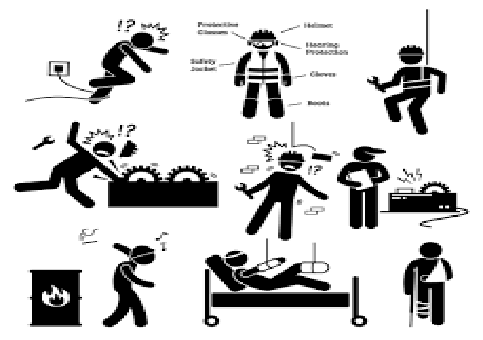The boardroom's role in preventing accidents and incident
In the health and safety industry, it is becoming more frequent for investigations into accidents and incidents at the workplace to be at best, inadequate. This means that there is regularly the risk that these incidents will have the opportunity to repeat themselves and can therefore pose a threat to a businesses long term sustainability.
Importance of the board
Regularly, especially in larger sized enterprises, board members are not dealing directly with the accident investigations but instead have subordinates undertaking these and reporting back the findings. Although this can in some areas be successful, it is frequently found that there is no follow up or assessment of the investigation by the board member. Instead it is assumed that the investigation is carried out to a suitable standard and then closed, however this can cause problems of its own.
Typically, health and safety investigators will have infrequent investigations to carry out and although initial training may have been given at the start of their employment it is likely that competency in these investigations will naturally slip. Due to this it means that the detail and quality of the investigations is likely to drop, and without any additional assessment from another individual it is likely that a number of details remain a mystery.
The two main details that are often missed or lack analysis are the actual findings and the root cause of an incident. Regularly, board reports only include top level statistics of an incident including details of the injured individual and their injuries but rarely findings of the bigger picture.
Importance of training
One of the most important ways to ensure that reports and investigations are being carried out appropriately is training. Unfortunately, far too often inadequate training systems and processes are implemented within organisations that result in poor health and safety reporting which has a knock on effect on the prevention of future incidents. Far too regularly, employees receive initial training when they begin their employment and this is then viewed as fulfilled.
What is required is ongoing training throughout employment including procedures for monitoring the effectiveness of the training. For example, are individuals actively implementing actions demonstrated through the training and how can this be recorded.
Changes for the boardroom
So what are the key ways that board members can help to improve the overall effectiveness of preventing accidents and incidents?
- Regular reports of leading indicators need to be received
- Incident and accident summaries should be assessed with remedial actions proposed
- Tracking documents should be put in place to see the progress and implementation of remedial action to ensure incidents are not repeated
- Investigation of the difference between the immediate cause of an incident and the root cause of an incident
- Incorporating other areas of the business such as HR when appropriate
- Ongoing training and regular monitoring of progress and effectiveness
It is important to remember that everyone within an organisation is to some degree responsible for the prevention of accidents and incidents. It is imperative that board members are active within the investigative and reporting processes of the health and safety procedures to ensure long term prevention of recurring issues.



